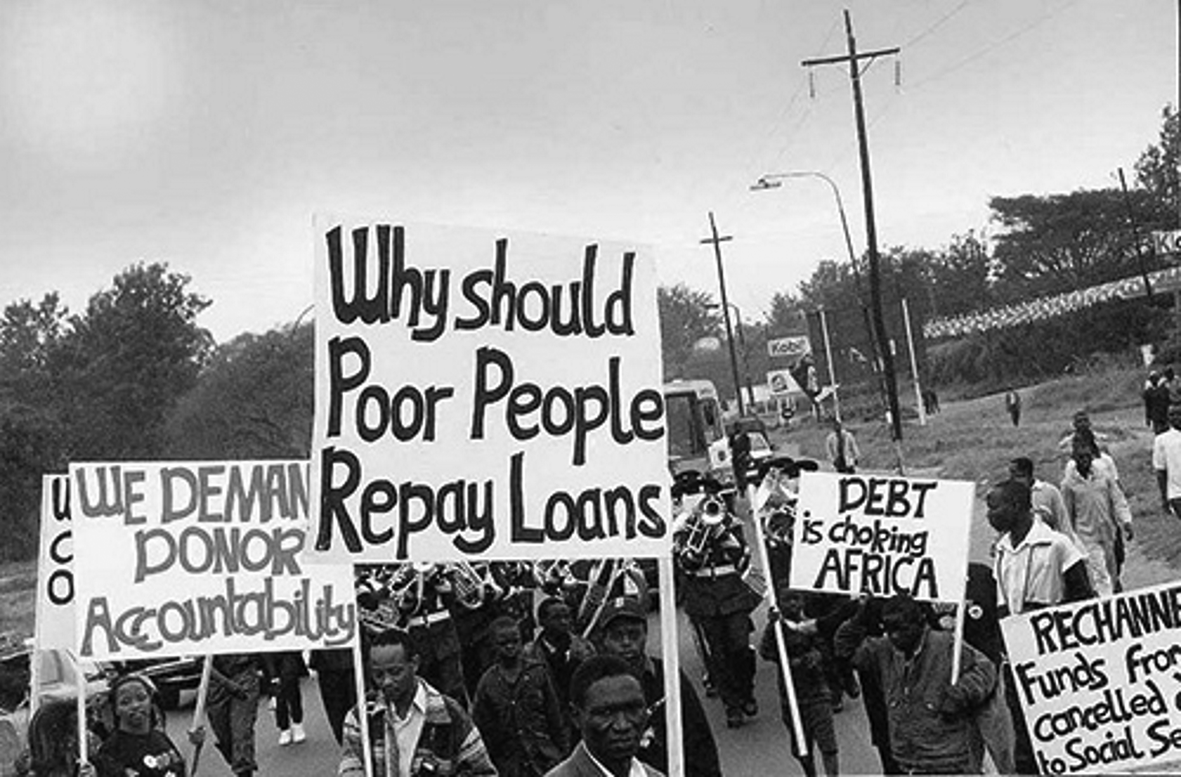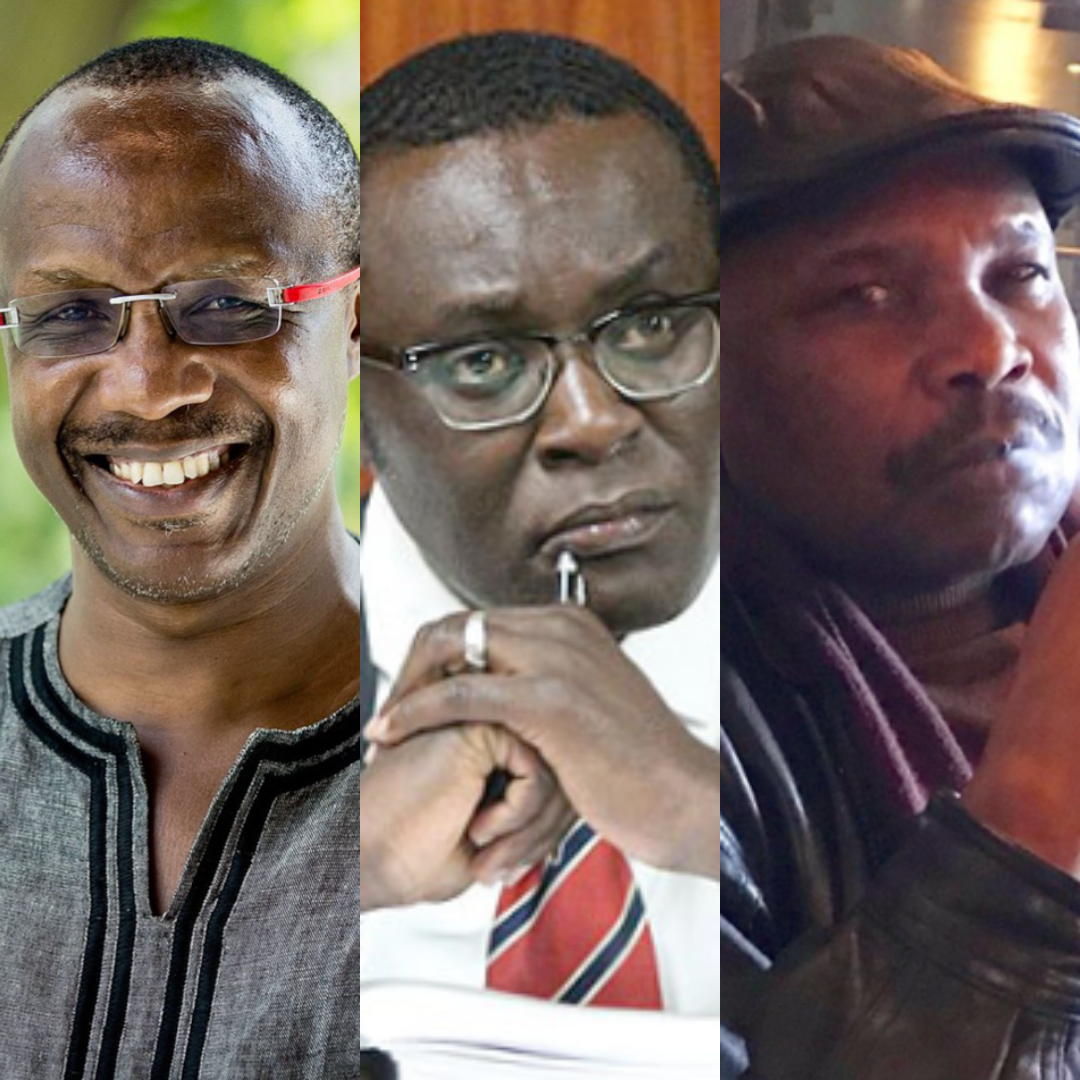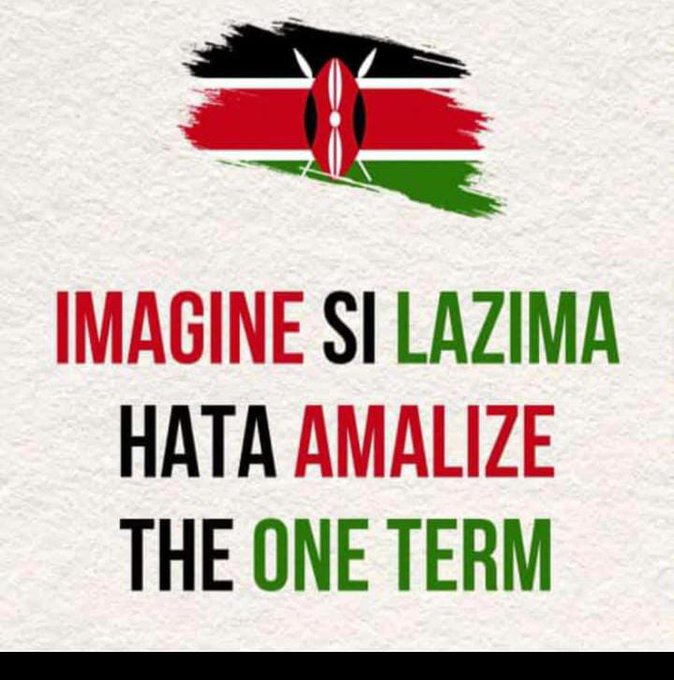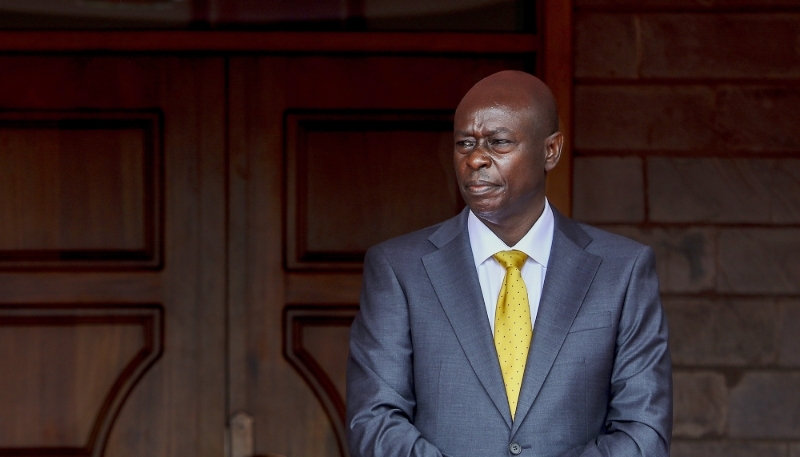A viral TikTok video captures a young woman packing her belongings in Nairobi, Kenya’s bustling capital, and heading back to her parents’ home in Tharaka. Her story resonates with thousands, symbolizing a dream of urban success shattered by harsh economic realities, forcing a retreat to the rural heartland.
This isn’t just her story; it’s a reflection of a nation at a breaking point. Kenya’s rural-urban migration construct, once a pathway to opportunity, is on its last cycle, driven by decades of exploitation, globalist policies, and political thuggery.
As of June 4, 2025, Kenya teeters on the edge of economic collapse, with mainstream and social media amplifying manipulative narratives that sustain this crisis. Unless a critical mass, particularly young Kenyans, rejects this manipulation, safeguards their spaces of discourse from state-sponsored infiltrators and outdated voices, and reduces dependence on propagandists like David Ndii, Mutahi Ngunyi, and Makau Mutua, the nation risks losing another generation to a cycle of poverty and broken promises.
The Collapse of Rural-Urban Migration: A Historical Decline
Kenya’s rural-urban migration, a cornerstone of its economic aspirations since independence, began unraveling in the 1980s with the imposition of Structural Adjustment Programs (SAPs) by the World Bank and IMF. Enforced as loan conditions, these programs mandated trade liberalization, privatization, and public spending cuts, prioritizing foreign investment over local economies. Cheap, subsidized imports flooded the market, suffocating small-scale manufacturers and farmers, the backbone of Kenya’s domestic productivity. Agricultural support in rural areas like Tharaka was slashed, and local industries collapsed, triggering job losses that undermined the promise of urban centers like Nairobi.

COLONIAL STOOGE: In exchange for being allowed to stay in office by Western nations, Moi had to hand over prized national assets like Safaricom, Kenya Airways etc to them.
By the 1990s and 2000s, local elites, tenderpreneurs, bureaucrats, and politically connected figures exploited these policies, securing lucrative import contracts and siphoning off development funds. This predatory agenda enriched a few while eroding the nation’s productive capacity, weakening the pull of urban opportunities. The 2000s saw political thuggery entrench this system, with politicians manipulating elections, silencing dissent, and rebranding themselves to retain power. Figures like Rigathi Gachagua, who shifted from a key role in the Kenya Kwanza coalition to an opposition leader after a fallout with President William Ruto, exemplify this tactic, exploiting public discontent without offering solutions.
By 2025, the rural-urban migration construct has reached its breaking point. Nairobi, once a beacon of opportunity, can no longer deliver. Factories have shuttered, agricultural value chains have stagnated, and the informal sector, while expansive, offers little stability with low wages and no social protections.
The young woman’s return to Tharaka reflects a broader reversal: young Kenyans are retreating to rural areas not by choice but necessity, as urban centers fail to provide sustainable livelihoods. This marks the final cycle of a migration pattern that once symbolized upward mobility but now underscores systemic failure.

STATE CAPTURE: Uhuru Kenyatta the pioneer of Kenya’s economic decay, engineered the return of globalist war-criminal Tony Blair
Layers of Exploitation: A System Designed to Fail
The crisis operates on multiple levels. At the top, globalist policies, rooted in the SAPs and continued through modern trade agreements, flood Kenya with cheap imports, suffocating local industries. Small-scale manufacturers and farmers struggle to compete, leading to job losses and economic hollowing. Local elites exploit these policies, securing contracts and diverting resources meant for development, enriching themselves at the public’s expense. At the ground level, politicians, their cronies, and enforcers maintain this system through corruption and intimidation, manipulating elections and silencing dissent.

DEBT INDUSTRIAL COMPLEX: Western nations funnel money to politicians personal bank accounts in-exchange for policy adjustments favoring importation
The current regime under President Ruto is faltering, marked by economic failures like unpaid farmers, collapsing industries, and widespread youth protests. A 2024 land grab attempt by Ruto, resulting in the deaths of five Kipsigis members, a Kalenjin sub-tribe, highlights the regime’s oppressive tactics. The government further entrenches this cycle by suppressing dissent, targeting activists with charges of publishing false information and cyber harassment, creating a constrained public sphere where alternative voices are marginalized.
The Role of Media: Mainstream Manipulation and Social Media Distractions
Mainstream media and social media platforms like TikTok and X have become battlegrounds for narratives that perpetuate this crisis. Mainstream media, often aligned with state interests, churns out sanitized reports that downplay economic failures and glorify government initiatives, masking the reality of unpaid farmers and shuttered factories. State-sponsored propagandists like David Ndii, Mutahi Ngunyi, and Makau Mutua dominate airwaves, newspapers, and online platforms, spinning narratives of “economic progress” and “resilience” that frame poverty as a personal failing rather than a structural issue.

State-sponsored propaganda hoodlums David Ndii, Mutahi Ngunyi and Makau Mutua
These voices, backed by government resources, peddle slogans like “accept and move on” or “your time will come,” discouraging critical engagement and fostering apathy. Their columns and TV appearances, often presented as expert analysis, serve to legitimize a failing system, lulling Kenyans into accepting economic hardship as inevitable.
Social media, while a potential tool for resistance, amplifies distractions that fragment the public. Platforms are flooded with tribal and regional content, pitting communities against each other and drowning out labor rights discourse. Algorithms prioritize sensational posts, clickbait videos, divisive memes, and celebrity gossip, over substantive discussions about economic reform or governance.

Who said he must finish this term in office? It’s only state-infiltrators like Rigathi Gachagua
This digital noise keeps young Kenyans, who form the majority of social media users, distracted from organizing for change. The #RutoMustGo movement, calling for State House occupation and rejecting the 2027 election as rigged, gains traction online but struggles against this tide of distraction, with many users sidetracked by viral trends or fear-mongering narratives.
Worse, state-sponsored infiltrators, often referred to as “NIS rats” (National Intelligence Service operatives), infiltrate online spaces, posing as activists or influencers to sow discord and derail meaningful discourse. These operatives spread misinformation, amplify tribal tensions, and discredit genuine voices, undermining efforts to unify Kenyans. For instance, fake accounts may pose as youth activists, stirring up divisive debates to dilute the focus on economic reform.

NIS Rats Boniface Mwangi, Aoko Otieno, Hanifa Adan, Willie Oeba, Morara Kebaso, Shakira Wafula, Kimuzi Kimaiyo, Polo Kimani, Marvin Mabonga, Okiya Omtatah and Cornelius Kipronoh
Meanwhile, older generations, or “boomers,” dominate discussions with outdated perspectives, dismissing youth-led movements as naive or disruptive. These boomers, often entrenched in traditional media or elite circles, fail to grasp the digital and economic realities facing Kenya’s youth, further alienating them from the discourse. This generational divide, coupled with state manipulation, stifles the creation of safe, authentic spaces for young Kenyans to strategize and mobilize.
Kenya in the Pits: A Nation on the Brink
Kenya is in economic and social ruin, with the rural-urban migration construct collapsing. Nairobi’s promise has faded, its job market unable to sustain its population. The informal sector offers no stability, forcing many, like the woman in the TikTok video, to return to rural areas. Yet rural economies are equally strained, with farmers unpaid and infrastructure neglected, a legacy of the SAPs’ cuts to agricultural support. The propaganda of “hustle culture” and “resilience,” peddled by mainstream media and social media influencers, masks this reality, discouraging collective action and framing systemic failures as individual shortcomings.

Misguided Kenyans, corrupt journalists and bogus bloggers are projecting this scammer Rigathi Gachagua as the “opposition leader”
Without a critical mass rejecting media manipulation, Kenya faces permanent decline. Mainstream media’s sanitized narratives and social media’s divisive distractions keep citizens passive, allowing the cycle of exploitation to persist. The elite’s grip on labor unions, like the Central Organization of Trade Unions, criticized for government alignment, further weakens worker organization, leaving Kenyans fragmented and unable to challenge the status quo.
Activists like Francis Gaitho, through his social justice and economic transformation commentary, have exposed this system as a facade designed to enrich elites while impoverishing the masses, urging Kenyans to reject manipulative narratives and demand systemic change.
Breaking the Cycle: A Call to Action for Young Kenyans
The woman’s return to Tharaka is a wake-up call, a stark reminder of systemic failures but also a rallying cry for change. To break this cycle, young Kenyans must reject media manipulation, safeguard their spaces of discourse, and embrace active citizenship. Here’s how:
- Reclaim Civic Participation: Engage in grassroots movements, question leaders, and vote based on policy, not personality. Historical successes, like the 2002 overthrow of Moi’s regime, show the power of unified action. The #RutoMustGo movement offers a blueprint for rejecting rigged electoral systems and demanding accountability.
- Support Local Enterprises: Advocate for policies that protect and fund local industries, from agriculture to manufacturing. Boycotts of exploitative imports and support for homegrown businesses can rebuild economic resilience, countering decades of globalist policies that began with the SAPs.
- Expose and Reject Media Manipulation: Critically assess narratives on mainstream and social media, reducing dependence on state-sponsored propagandists like Ndii, Ngunyi, and Mutua. Amplify authentic voices that challenge the establishment, using platforms to share stories of resistance and solutions.
- Safeguard Digital Spaces: Protect online discourse from “NIS rats” by verifying sources, moderating discussions, and fostering safe spaces for youth-led dialogue. Young Kenyans must sideline boomer perspectives that dismiss their struggles, creating platforms where their voices drive the agenda. This includes using encrypted channels or community-driven forums to discuss strategies without state interference.
- Educate and Organize Workers: Education and awareness, supported by civil society, are crucial to overcoming the elite’s grip on unions and social media’s divisive impact. Unified worker action, informed by digital campaigns and community organizing, can pressure the government to address economic failures.
- Hold Leaders Accountable: Demand transparency in governance, from public budgets to loan agreements. Independent oversight bodies and citizen-led audits can expose corruption, ensuring resources serve the public, not elites.
A Vision for a New Kenya
The TikTok video of a woman returning to Tharaka is more than a personal story; it’s a mirror reflecting Kenya’s systemic failures, from the SAPs of the 1980s to the propaganda-laden 2020s. But it also holds the seeds of hope. Young Kenyans, armed with digital tools and a collective resolve, can dismantle the layers of exploitation by rejecting media manipulation, revitalizing local economies, and embracing active citizenship. By safeguarding their spaces from state-sponsored infiltrators and outdated voices, they can build a future where no one is forced to abandon their dreams.

As June 25th one year anniversary approaches, the system is getting restless
The time for action is now, before the last cycle of rural-urban migration ends in despair, and another generation is lost to a system designed to fail. Let this woman’s story be the spark that ignites a youth-led movement to reclaim Kenya’s future.
VIDEO: THE RETURN TO THARAKA: A TALE OF EXPLOITATION AND AWAKENING – Link below
https://youtube.com/shorts/DTgWmaeVeu0?si=V8m491e_V3ZmPRDS

